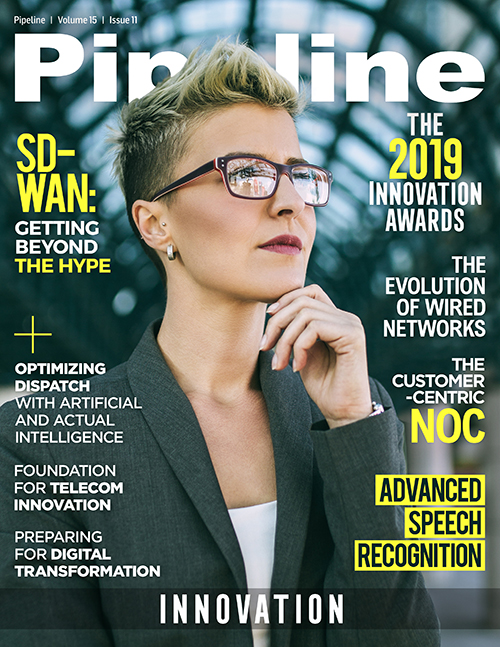The Customer-centric NOC
By: Andrew Colby

If communications service providers (CSPs) are to consistently deliver world-class customer experiences across their diverse network service portfolios, their network operations centers (NOCs) must become far more customer-centric in nature.
Traditional NOCs weren’t designed with today’s network and service complexity in mind. That reality leaves CSPs with little choice but to move beyond the key performance indicators (KPIs) they have long used to manage their networks. Mounting competitive pressures to deliver and maintain high-quality, on-demand services are driving CSPs to add smart capabilities in the form of analytics, artificial intelligence (AI) and machine learning (ML) to their operational arsenals.
Analytics platforms that ingest data from a wide variety of sources open up visibility into end-user devices and applications, partnered and overlaid services, and specific subscriber experiences. Analytics also can predict the trickle-down impact of a network change and allow CSPs to automate operational, troubleshooting, and provisioning functions so that they can achieve the agility needed in today’s on-demand digital business climate.
The dividends that analytics can pay are substantial. McKinsey estimates, for example, that telcos that deploy advanced analytics can reduce customer churn by up to 15 percent. The firm also says it has seen some CSPs using advanced analytics squeeze as much as 30 percent out of their operating costs.
Where Today’s NOCs Fall Short
At issue is that today’s NOCs were built by people who were experts in network infrastructure equipment. As such, NOCs tend to deliver a network-focused view of the telco infrastructure; they lack details that pertain to individual subscribers or application services and infrastructure. The Net Promoter Score (NPS) system that most operators use to determine aggregate customer satisfaction levels is woefully uninformative in terms of what customers are actually experiencing with any given service at any particular time.
Traditional NOCs have long allowed CSPs to maintain a handle on their networks at a macro level, offering visibility into KPIs such as overall volume of dropped calls, packet loss levels in a given switch or router, and network congestion levels. These aggregate measurements remain important for tuning the network and rerouting traffic for overall network health and optimization. Alone, they were once adequate when CSP networks were built on fairly consistent topologies and delivered a finite number of services that mapped directly to CSP’s infrastructures.
Today’s networks and services paint a very different picture. CSP networks often deliver disaggregated, over-the-top (OTT) applications and services originating from third-party sources, for example, with little or no visibility into those services. A given subscriber might be multiple “hops” away on a mobile device traversing a variety of connections to reach a given CSP’s backbone network or content service.
As a result, there’s a continual avalanche of data, alerts, and alarms concerning a seemingly endless number of network elements, applications, and subscribers being generated and stored across many interconnected networks. It has become very difficult for NOC engineers to sift through it all to find and act upon the ones that are important—and to do so in the split-second time frames that real-time services require.
There are plenty of alarms that lack relevance and can be disregarded. But others—such as notification of equipment overheating —are critical, yet difficult to uncover in the “haystack” of notifications. In addition, alarms don’t help CSPs understand the experience that an individual customer is having with a particular service. Consequently, by themselves, alarms are inadequate for managing today’s telco environment in a way that reliably delivers high-quality, consistent experiences.
Who Ya Gonna Call?
Consider the following scenario, for example: a third-party content provider such as Netflix or Hulu delivers streaming video entertainment to its subscribers over a CSP’s telecom network. A subscriber experiences an issue with the video frequently buffering or freezing. Unable to find a service or support number for Netflix or Hulu, the subscriber contacts his network operator to resolve the issue.
But the CSP has perhaps hundreds or thousands of different kinds of services riding its network—five flavors of landline and wireless voice, Internet access, multimedia entertainment, messaging from a variety of providers, shopping services, and so on. How does the CSP begin to figure out the root cause of that subscriber’s issue to fix it?



















